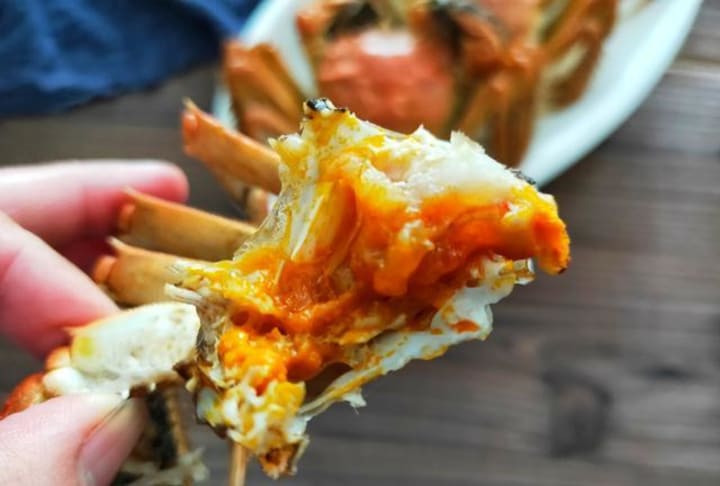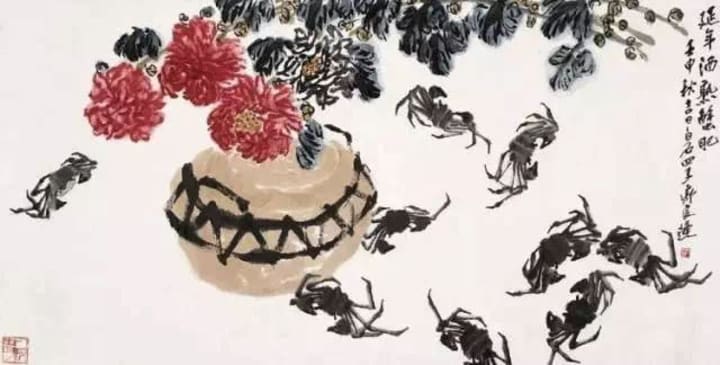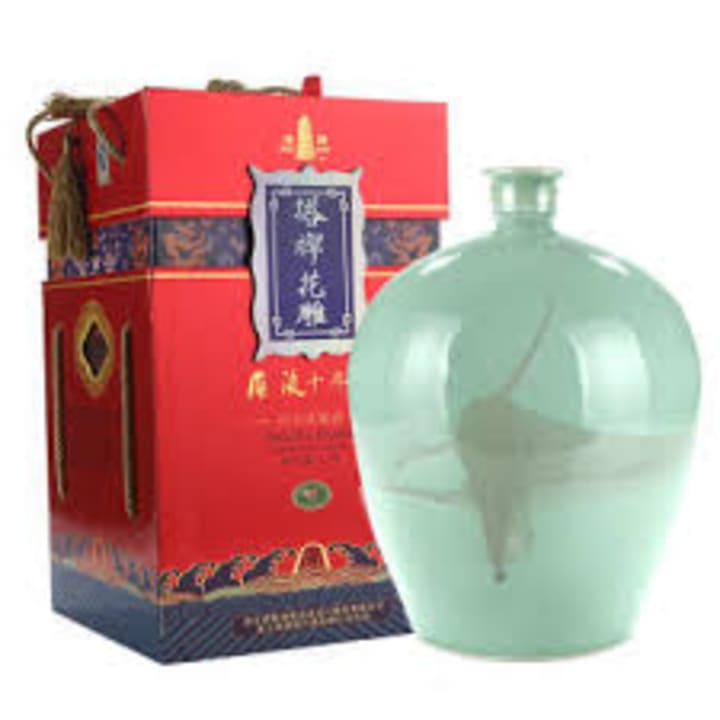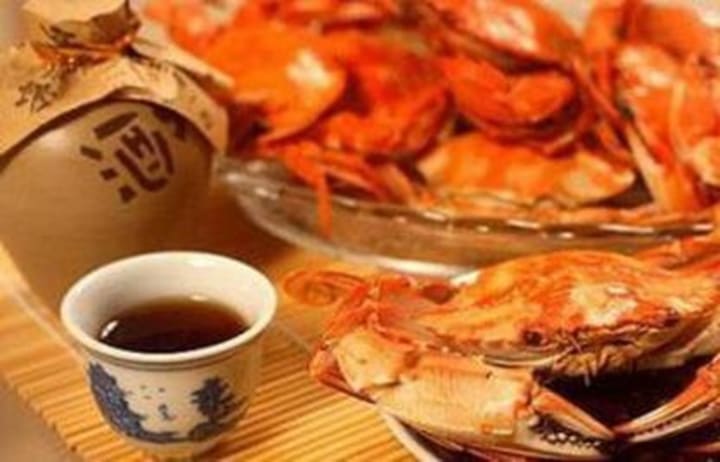A feast in Autumn
Hairy crab paired with yellow rice wine

Crab (Hairy crab) paired with yellow rice wine is a very classic match in Chinese cuisine.
“When you feel the Autumn breeze, it’s the time to eat crab; the chrysanthemum is blooming; you can smell the crab’s aroma.” In late Autumn, the hairy crabs have reached their peak. The meat is firm and full, the crab cream is golden, and the crab paste is like white jade. Paired with some warm yellow rice wine, even the cold in autumn cannot stop our enthusiasm for eating crabs. After all, the delicious carb can only be tasted this season from September to November. At this season, hairy crabs generally strong and mature. The flavor of the crab cream and crab paste is the best. Later in December, the hairy crabs will look a little empty that not as plump as before.

Li Yu, a famous foodie in the Qing Dynasty, said in his “Occasional Notes with leisure motions” that “Crabs are fresh and fat, sweet and greasy. The white part is like jade, and the yellow part is like gold. It has reached the top of color, aroma, and taste that nothing can go beyond it.” The poetry god Li Bai wrote down: “Crab claws are gold liquid, while the distilled grain is Penglai (a famous island where live many gods). You must drink the wine, and get drunk on the moon.” in his poem “Drinking Alone under the Moon.” A jar of wine, two pairs of hairy crabs, became the source of inspiration for literati. The habit of eating crabs and drinking yellow rice wine has been around for a long time. With wine and crabs, it’s a naturally more aesthetic mood and has the story of Bi Zhuo holding the claws: Holding a crab in the left hand and holding a cup in the right, it’s enough for life.

What kind of wine would be drunk with crabs? In theory, it can be paired with white wine, red wine, but yellow rice wine is best. As one of the three ancient wines alongside beer and wine, yellow rice wine is a liquor with Chinee characteristics. It uses rice, millet, corn, wheat, and other grains as raw materials, undergoes more than a dozen processes such as rice soaking, steaming, putting into the jar, adding distiller’s yeast, pressing, filtering, decoction sterilization, sealing, blending, etc., thereby forming the characteristics of orange color, mellow aroma, and soft taste. Yellow rice wine is also like wine in that it can be divided into dry type (15g/L), semi-dry type (15-40g/L), semi-sweet type (40-100g/L), and sweet (100g/L) according to the sugar content of the wine. Semi-dry rice wine is the most balanced, mellow taste that best highlights the food's original flavor. Therefore, semi-dry rice wine is the best partner for hairy crabs. The semi-dry wine's main representatives are special rice-adding wine (Hua Diao wine), Shanghai Shiku, etc. Because it adds less water during brewing, which is equivalent to increasing the amount of grain during brewing, it is named after the reason. Most high-end rice wines are belonging to this category.

Why do hairy crabs match so well with yellow rice wine? On the one hand, because the rice wine is rich in amino acids and esters, which can enhance the umami taste of crab meat; and the alcohol ingredient can not only remove fishy, but also eliminate the greasiness in the crab cream to further enhance the sense of deliciousness, and play a role in sterilization. Crab is food with extreme cold in nature. Suppose people with spleen and/or stomach insufficiency are prone to diarrhea and abdominal pain symptoms. Traditional Chinese medicine believes that rice wine has the effect of invigorating the blood and warming the stomach; it has always been considered a good choice for removing cold when eating crabs. The coldness of the crab and the rice wine's warmth is exactly offset, so it is less stressful to eat. The rice wine will emit a strong aroma after a little heating, and the taste is very soft. Drinking at this time helps us taste the sweet wine aroma and is also very beneficial to our health.

For those who cannot drink wine, brewing a cup of ripe Pu’er tea for drinking after eating crabs is an alternative. Pu’er ripe tea is a fermented tea. The tea is very mild. It can further eliminate more cold brought by crabs to protect the stomach from irritation and promote intestinal peristalsis and help digestion.
In Autumn, let’s have a feast of hairy crabs, yellow rice wine, and/or Pu’er ripe tea!






Comments
There are no comments for this story
Be the first to respond and start the conversation.